How to Leash Train a Dog in 7 Steps
- Anja Boecker
- Updated: 2023-05-31
If your dog is constantly pulling on the leash, it will inevitably wear on your nerves and your relationship with your pet. What should be a relaxing walk can become a nightmare. In this article, I'll show you how to make walking a pleasure again.
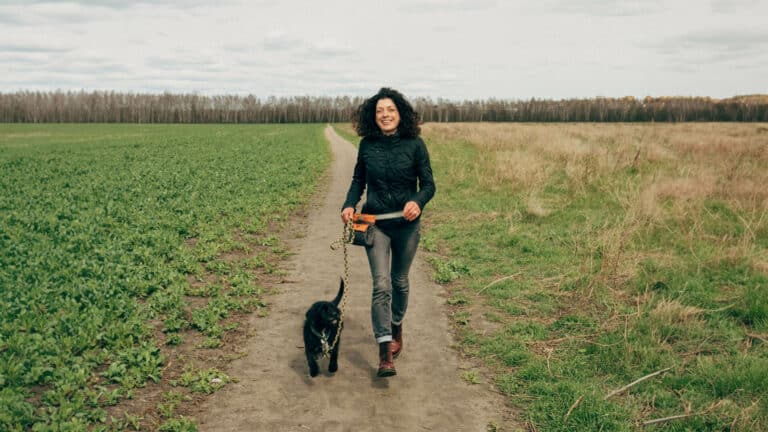
What is Leash Leadership?
Leash walking is when your dog walks on a leash without pulling. This is important for a relaxed walk. Leash walking allows you to guide your dog safely.
This is especially important in the city or when other dogs are around. You are teaching your dog to listen to your signals and to follow you. There are several ways to train your dog to walk on a leash.
It may take some time for your dog to master walking on a leash. Every dog is different and needs his own pace. Be patient and positive as you train. In time, you will see your dog become a better leashed dog.
When Should I Start Practicing?
You can start leash training as soon as your dog moves in with you. Even puppies can learn to walk on a leash at an early age.
But remember that they are still small and need a lot of sleep. Start with short training sessions of a few minutes. Keep the training positive. With patience and practice, your dog will soon understand what you want.
From about 6 months of age, training sessions can become longer and more intense. This depends on the dog and its personality.
Leash Handling with Puppy
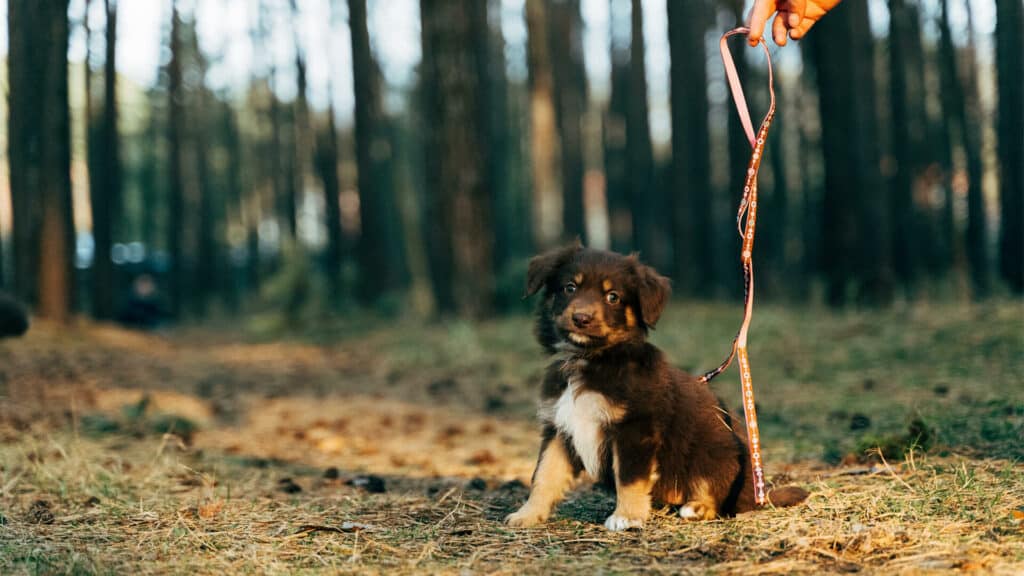
This behavior is more common in young puppies than in adult dogs. Puppies are more likely to pull on the leash as they explore on every walk.
▶ With a little consistency, this behavior will subside after a few months. Proper dog training is the be-all and end-all.
You don't need any special skills to teach your puppy to walk on a leash.
▶ As your puppy gets older, his behavior should automatically improve.
The situation is different for adult dogs. It is more difficult to correct the lack of leash control.
This requires a little more training and patience. The lack of leash control can be due to a number of reasons.
Why You Should Know How to Train a Dog on a Leash
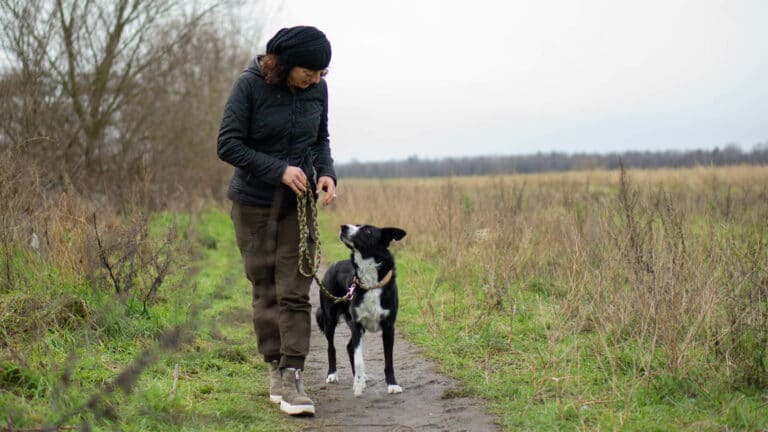
1) Certain Breeds Are Too Wild
Today there are about 350 different breeds of dogs. Some of them tend to sniff wildly in nature. They tend to do this instinctively.
Typical "sniffer dogs" include:
- Boxer
- Dobermann
- Hovawart
- Giant Schnauzer
- Rottweiler
- Shepherd
2) Leash Manners
The typical leash pulling will diminish as the dog grows up and becomes calmer. However, the foundation for this is good dog training.
It is not very difficult to improve a puppy's leash walking skills. Consistent and loving training is usually enough.
Poor leash management can be the result of poor training. Is this the case with your dog? Then you should address the problem quickly and improve leash control. You can do this by following my instructions below.
3) Stress-Free Walks
Walking should be done without stress and hurry.
Of course, it's understandable that you have a daily work routine with commitments and deadlines. However, you may want to consider making a change.
Running between commitments and time constraints can be stressful and unhealthy.
Not only do you suffer. It's not good for your dog either. When you are stressed, it can rub off on your pet. Then he too will start to rush and pull on the leash.
4) Longer Walks
Too short walks go hand in hand with stressful walks. As a dog owner, you may not feel like walking your dog.
Especially after a sleepless night or on cold days, the desire can fade quickly. This is completely understandable.
However, if most walks are too short, this is often the trigger for poor leash walking.
5) Walking for Fun
Of course, it is difficult to find new and exciting places to take your loyal companion. However, you may want to consider taking alternative routes to new locations in the future.
You should use at least three different routes. This is important to keep your pet interested in the walks. Monotonous walks actually encourage poor leash management.
Never Pull on the Leash!
There is a serious mistake that is counterproductive to improving leash handling.
Even if your dog is driving you crazy by constantly pulling on the leash, never pull back on the leash.
With a jerk, you can injure your pet. Also, you will not get your dog to pull less on the leash.
How Do I Teach My Dog to Walk on a Leash?
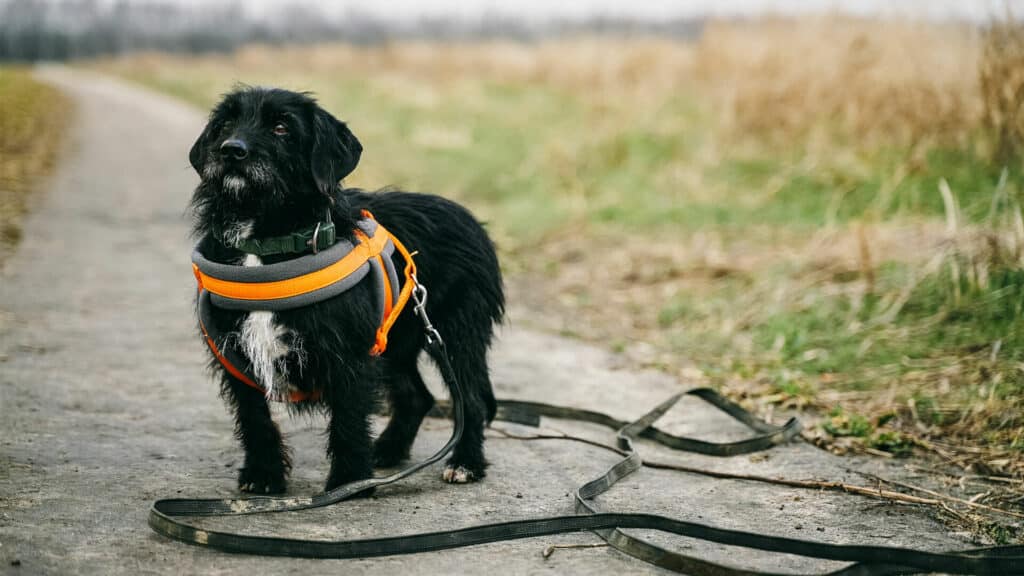
I have already given you some important information. Now let us get down to business.
How can I improve leash handling?
Leash walking is an important part of dog training and allows for relaxed and safe walks.
Training requires patience and consistency, but with positive reinforcement and regular practice, any dog can learn to walk well on a leash.
Pace changes, rewards, and good preparation are some of the techniques that can help you and your dog achieve a comfortable leashed walk together.
The Preparation
7 Step Guide
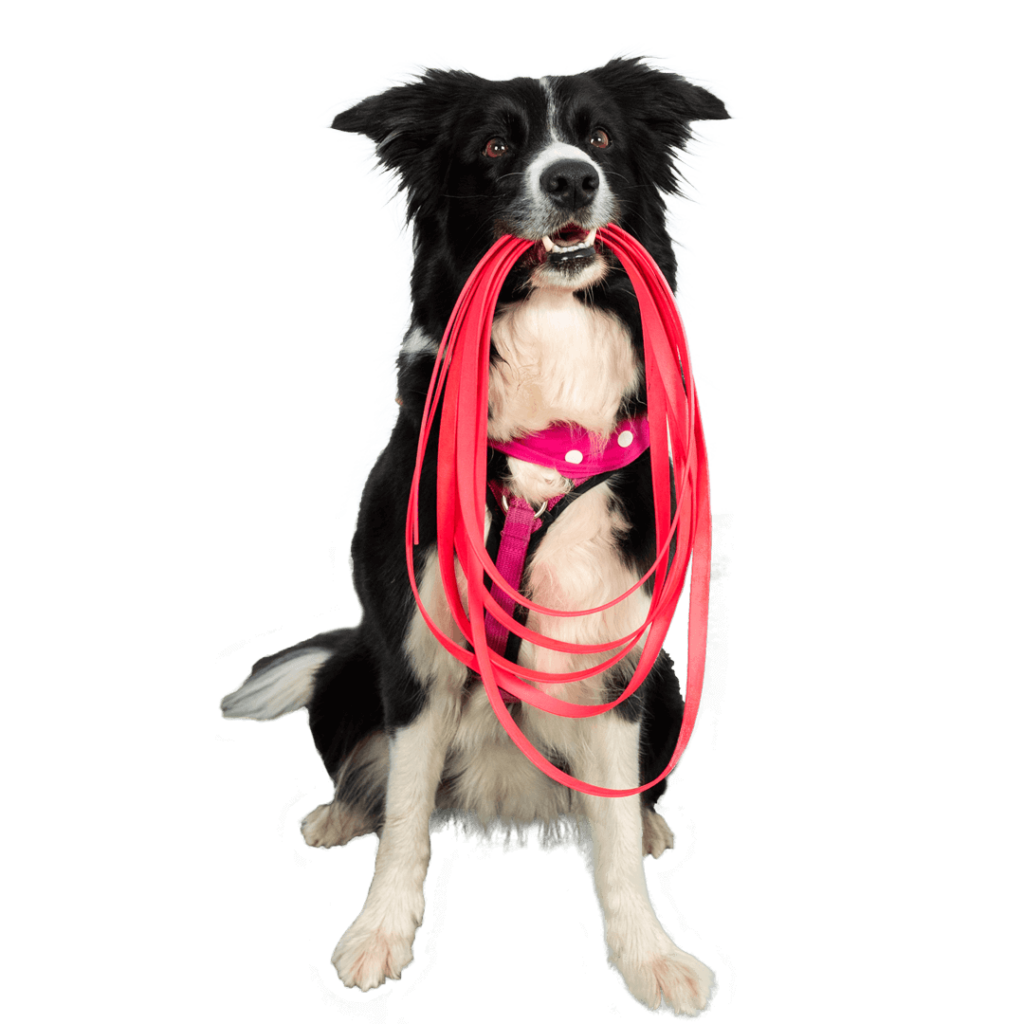
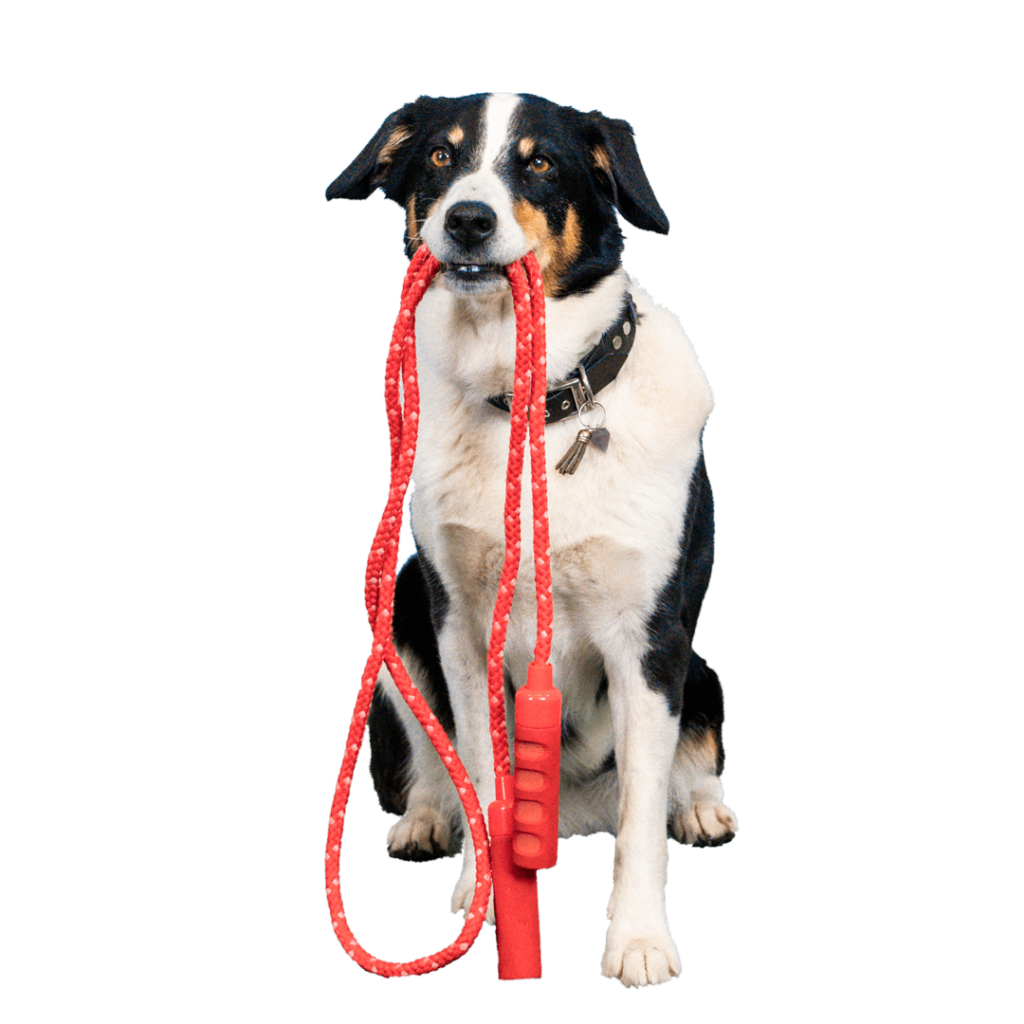
1) Positive Associations
Many dogs associate the leash with something negative. Do you feel the same way? Then counteract it. Associate the leash with something positive. For example, you can leave it out in the room with a treat next to it. You can also associate the leash with cuddling and petting. Just pick it up and pet your pet. The sky is the limit.
2) Choose a Quieter Location
Have you had a few days of positive experience with the leash? Then it's time for your first "practice walk". The following is important for this walk: Choose a quiet place for your foster to walk. Too many distractions and stimuli are counterproductive to improving leash handling.
3) Consistent Walk
Walk your dog a few laps at a slow pace. If he starts to pull, stop consistently. If your dog doesn't stop, it's time to change directions. Slowly walk in the opposite direction. Be careful not to pull your dog with you when you change directions. If your dog walks alongside you and the leash stays loose, reward him with a treat and words of praise. Repeat this exercise regularly and slowly increase the length of your walks. Over time, add more distractions so your dog learns to focus in more exciting environments.
4) Installing Signals
Once you have done step 3 a few times, you can move on to the next step. In the fourth step, it's time to start using signals. So when your dog starts pulling on the leash, use words like "leash" or "mugwort". This will help you coordinate your dog better in the future.
5) Change Tempo
Change of pace is an effective way to train your dog's leash walking skills. It simply means that you change your pace as you walk. Sometimes you walk faster, sometimes you walk slower, and sometimes you stop. When you change your pace, your dog has to pay attention to follow you. He will learn that he needs to respond to your movements and pace instead of just pulling ahead. Start with small changes and praise your dog when he responds well. Over time, your dog will learn to focus more on you and pull less on the leash. Remember to be patient and keep the training positive.
6) Rewards Are Essential
Of course, rewards should not be overused. Nor should they be used when there is no real sense of accomplishment. However, they are important when it comes to your dog's leash walking skills. Don't use rewards such as treats until your dog is beginning to comply. After a while, better leash walking will become a habit. Then reduce the rewards. Give them only when the walk was successful overall or when your dog didn't pull once.
7) Avoid the Following Mistakes
Avoiding the above mistakes is important for a successful walk. Therefore, always make sure that you do not pull your dog back. Except for unexpected incidents, of course. When you really have no choice but to pull him back. Avoid the causes that can lead to poor leash management. So it is best to avoid: monotonous walks, short walks, stressful walks, inconsistency, aggressive training or training methods.
Before you begin training, remember:
- Make sure you have a good leash and a proper harness or collar.
- Choose a quiet place to start training. Fewer distractions make it easier for the dog to learn.
- Take treats with you. They are a good reward and help your dog associate the training positively.
- Plan short workouts. Especially in the beginning, do not train for too long.
- Be patient and calm. Your dog senses your mood and it helps him if you are calm.
- Adapt training to your dog's needs. Each dog is unique and needs its own pace.
Frequently Asked Questions
There are many reasons why your dog may pull on the leash. He may be excited and want to move faster. Or he may see something interesting, such as another dog, a squirrel, or a pigeon. Some dogs pull out of insecurity or fear. Your dog may not have learned to walk on a leash. Sometimes it can be for health reasons, so if in doubt, consult a veterinarian. However, with patience and proper training, leash pulling can be corrected in most cases. In this article you will find more information: Your dog pulls on the leash? (That's what you should do about it?)
If your dog starts to pull, you should stop immediately until he stops. If he does not stop, walk in the opposite direction. Under no circumstances should you pull your dog backwards.
In general, harnesses are preferable because they are much gentler than collars. Due to the better weight distribution of the harness, the neck vertebrae are relieved compared to the collar.
There are many reasons why your dog may not want to go for a walk. He may be afraid of the outside world, loud noises, or unfamiliar situations. He may have had a bad experience that he associates with walking. Sometimes the dog is just tired or sick. In this case, a veterinarian should be consulted. Young dogs may find the outside world overwhelming. With patience and positive reinforcement, you can help your dog feel more comfortable. Always be sensitive to your dog's needs and don't push him. Check out this article for more information: When Your Puppy Doesn’t Want to Walk: Reasons and Tips to Help
My Conclusion
Our tips and tricks make it easy to improve leash control. Always be sure to teach your dog without force or pressure.
Avoid brash parenting methods.
You can find step-by-step instructions with videos on how to train leash handling in our app.
If you take all this into consideration, nothing can go wrong. You and your dog will soon be enjoying relaxed walks. 😊

My name is Anja Boecker, and I am a certified dog trainer and behavior consultant. With these articles, I want to help you to understand your dog better and to build an inseparable bond.
Share Now:


Hi, should you practice leash walking with normal long or drag line?(Have a Golden Retriever mix from Corfu 1y. old ca.30Kg.)
Hello Inge, a drag leash is rather designed for dogs or training sessions where the aim is to train the recall with a dog from a further distance. A normal leash is perfectly sufficient for a leash leadership in the sense of "Beifuß" practice.